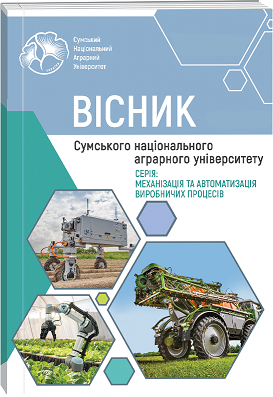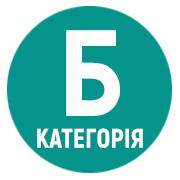EFFICIENCY OF THE USE OF UAVS DURING THE APPLICATION OF PPPS, HERBICIDES AND GROWTH REGULATORS (PHYTOHORMONES)
Abstract
The use of an unmanned aerial vehicle (UAVs) herbicide in the application of plant protection products (PPPs), pesticides and growth regulators (phytohormones) has numerous advantages. The use of UAVs makes it possible to ensure a more accurate and uniform application of the working solution, to comply with traditional methods, to reduce the costs of the technological operation as much as possible, to minimize the impact on the environment, to provide access to hard-to-reach areas where traditional equipment cannot work, reducing the risk to favorable workers working with harmful chemicals, helping to increase the productivity and profitability of agricultural production and many other means of their use. The presented study presents the effectiveness of using UAVs during the application of pesticides, herbicides and growth regulators (phytohormones) on the example of data collected on 5,000 hectares of land in the Sumy region, using various types of UAVs. The advantages of using UAVs compared to traditional spraying methods are analyzed. The name of the main brands of UAVs that work as service companies (SC). UAVs land treatment by types of crops was considered, focused attention on average rates of application and reduction of costs of working solution when using drones. Minimization of damage to the environment and reduction of risks for UAVs operators working with working solutions is shown. Technical aspects of using UAVs, such as flight route planning and the main malfunctions of Chinese-made UAVs, are taken into account. Major field drone malfunctions and operational issues are identified and described. The effectiveness of the use of drones was analyzed, namely the cost of owning a crew, the payback period of investments in drones and the growth rate of the total cost of owning a crew within 2-3 years were estimated. Also, the productivity of the time of use of aircraft was investigated, and non-productive losses were analyzed and methods of their reduction were given. The relevance of the use of UAVs in the agricultural sector increases their potential, which aims to significantly increase the efficiency, sustainability and competitiveness of modern agricultural production. Further research into the use of UAVs in the application of pesticides, herbicides and growth regulators (phytohormones) is a prerequisite for the development of modern, efficient and environmentally sustainable agriculture. They promote innovative approaches that can increase yields, lower costs and reduce negative environmental impacts.
References
2. Iost Filho, F.H.; Heldens, W.B.; Kong, Z.; de Lange, E.S. Drones (2020): Innovative technology for use in precision pest management. J. Econo. Entomol. 113, 1–25
3. Jean-Paul Yaacoub, Hassan Noura, Ola Salman & Ali Chehab (2020). Security analysis of drones systems: Attacks, limitations, and recommendations. Elsevier Public Health Emergency Collection. Removed from https://www.ncbi.nlm.nih.gov/pmc/articles /PMC7206421/
4. John F. Guilmartin (2020). Unmanned Aerial Vehicle. Military Aircraft. Britannica. https://www.britannica.com/technology/unmanned-aerial-vehicle. (in Ukrainian)
5. Kurlov V; Fesenko H.; Poliakov A. (2020). Pidvyshchennia efektyvnosti tekhnichnykh zasobiv lokalnoho vnesennia mineralnykh dobryv pry vyroshchuvanni silskohospodarskykh kultur.– [Increasing the efficiency of technical means of local application of mineral fertilizers during the cultivation of agricultural crops]. Naukovyi zhurnal «Inzheneriia pryrodokorystuvannia». 10.37700/enm. (15). S. 53-58. (in Ukrainian)
6. Lan, Y.& Chen, S. (2018). Current status and trends of plant protection UAV and its spraying technology in China. Int. J. Precis. Agric. Aviat. 1, 1–9
7. Lan, Y.; Wang, G. (2018), Development situation and prospects of China’s crop protection UAV industry. Agric. Eng. Technol. 38, 17–27
8. Li, X.; Giles, D.K.; Niederholzer, F.J.; Andaloro, J.T.; Lang, E.B.; Watson, L.J. (2021) Evaluation of an unmanned aerial vehicle as a new method of pesticide application for almond crop protection. Pest Manag. Sci. 77, 527–537
9. Mahajan U. & Bundel BR. (2017). Drones for Normalized Difference Vegetation Index (NDVI), to Estimate Crop Health for Precision Agriculture: A Cheaper Alternative for Spatial Satellite Sensors – In International Conference on Innovative Research in Agriculture, Food Science, Forestry, Horticulture, Aquaculture, Animal Sciences, Biodiversity, Ecological Sciences and Climate Change (AFHABEC-2016), At Jawaharlal Nehru University.
10. Nazvano perevahy zastosuvannia droniv dlia obpryskuvannia porivniano z nazemnoiu tekhnikoiu. (2023). [The advantages of using drones for spraying compared to ground equipment are named]. SuperAgronom.com. Holovnyi sait ahronomiv. https://superagronom.com/news/17281-nazvano-perevagi-zastosuvannya-droniv-dlya-obpriskuvannyaporivnyano-z-nazemnoyu-tehnikoyu. (in Ukrainian)
11. Palis, F.G.; Flor, R.J.; Warburton, H.; Hossain, M. Our farmers at risk: Behaviour and belief system in pesticide safety. J. Public Health 2006, 28, 43–48
12. Pinto, B.G.S.; Soares, T.K.M.; Linhares, M.A.; Ghisi, N.C. (2020) Occupational exposure to pesticides: Genetic danger to farmworkers and manufacturing workers–A meta-analytical review. Sci. Total Environ. 748, 141382
13. Qin, W.C.; Qiu, B.J.; Xue, X.Y.; Chen, C.; Xu, Z.F.; Zhou, Q.Q. (2016). Droplet deposition and control effect of insecticides sprayed with an unmanne.d aerial vehicle against plant hoppers. Crop Prot. 85, 79–88
14. Tymochko O.I., Holubnychyi D.Iu., Tretiak V.F. & Ruban I.V. (2007). Klasyfikatsiia bezpilotnykh litalnykh aparativ. Systemy ozbroiennia i viiskova tekhnika.– [Classification of unmanned aerial vehicles. Weapon systems and military equipment]. Systemy ozbroieennia ta viiskova tekhnika. – Vyp. (1/9), S. 61- 67. (in Ukrainian)
15. Wang, G.; Lan, Y.; Yuan, H.; Qi, H.; Chen, P.; Ouyang, F.; Han, Y. (2019) Comparison of spray deposition, control efficacy on wheat aphids and working efficiency in the wheat field of the unmanned aerial vehicle with boom sprayer and two conventional knapsack sprayers. Appl. Sci. 9, 218
16. Yan, Xiaojing & Zhou, Yangyang & Liu, Xiaohui & Yang, Daibin & Yuan, Huizhu. (2021). Minimizing Occupational Exposure to Pesticide and Increasing Control Efficacy of Pests by Unmanned Aerial Vehicle Application on Cowpea. Applied Sciences. 11. 9579. 10.3390/app11209579
17. Zastosuvannia bezpilotnykiv v silskomu hospodarstvi.– [Use of drones in agriculture] (2017), OOO «S-HREIN UKRAYNA», http://s-grain.com.ua/uk/novosti/primenenie-bespilotnikov-v-selskom-xozyajstve/. (in Ukrainian)

 ISSN
ISSN  ISSN
ISSN 



